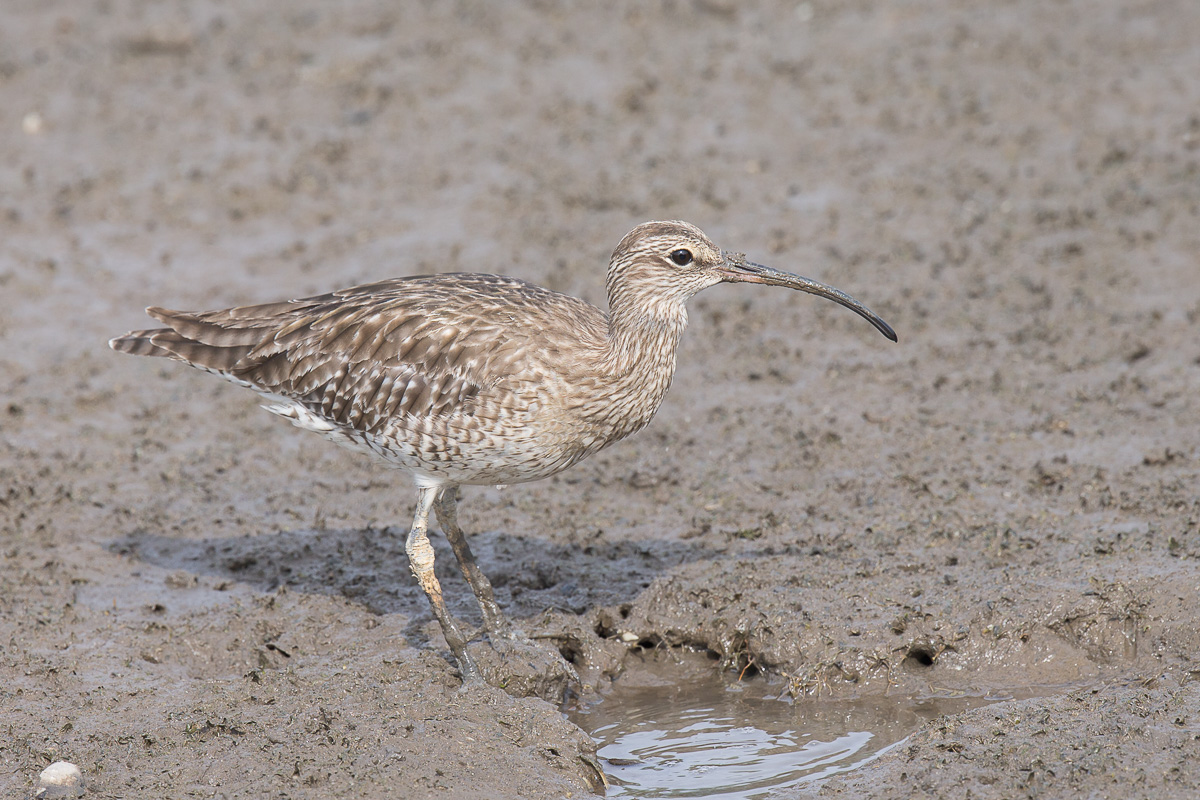Scientific Name: Numenius phaeopus
Malay Name: Kendi Gajah Erasia
Chinese Name: 中杓鹬
Range: Breeding in the sub-Arctic region of Asia and Europe. Winters in Africa, south Asia and into Australasia.
Taxonomy: Polytypic. Subspecies are: islandicus, phaeopus, alboaxillaris, rogachevae, variegatus.
Local Subspecies: phaeopus (Common migrant)
Size: 40-46 cm
Identification: A fairly large greyish-brown bird with with a long, decurved bill witrh a kink. Prominent black lateral crown stripe and eyestripe. Broad whitish supercillium and buffish-white neck and breast with dark streaks. Legs and feet dull grey. Although large, it is considered mid-sized compared to other curlews. Compared to the larger curlews, it has a shorter bill.
Similar looking species: Little Curlew, Eurasian Curlew, Far Eastern Curlew
Habitat: Winters mainly along the coastline, coastal wetlands, mangroves, marshes and larger rivers.
Behaviour/Ecology: A gregarious species that feed mainly on invertebrates by probing, and picking up occasional small crabs and similar prey.
Local Status: Uncommon migrant
Conservation Status: Least Concern (BirdLife International 2016)
Location: Sungei Buloh Wetland Reserve, Mandai Mudflats, Chek Jawa at Pulau Ubin and any other mudflats.
- Bird List Revision for January 2020 (Revisions)
Migrant bar chart (see more bar charts):
Conservation Status: IUCN Red List Page
Sound Recordings: xeno-canto Link
Wikipedia Entry: Wikipedia Link
eBird Species page: eBird (Whimbrel)
References:
BirdLife International. (2016). Numenius phaeopus. The IUCN Red List of Threatened Species 2016. https://dx.doi.org/10.2305/IUCN.UK.2016-3.RLTS.T22693178A86585436.en. Accessed on 1 January 2023
Robson, C. (2014). Field guide to the birds of South-East Asia (Second Edition). Bloomsbury Publishing, London.
RECOMMENDED CITATION
Bird Society of Singapore. (n.d.). Eurasian Whimbrel. Retrieved on May 7, 2024 from https://singaporebirds.com/species/eurasian-whimbrel.



